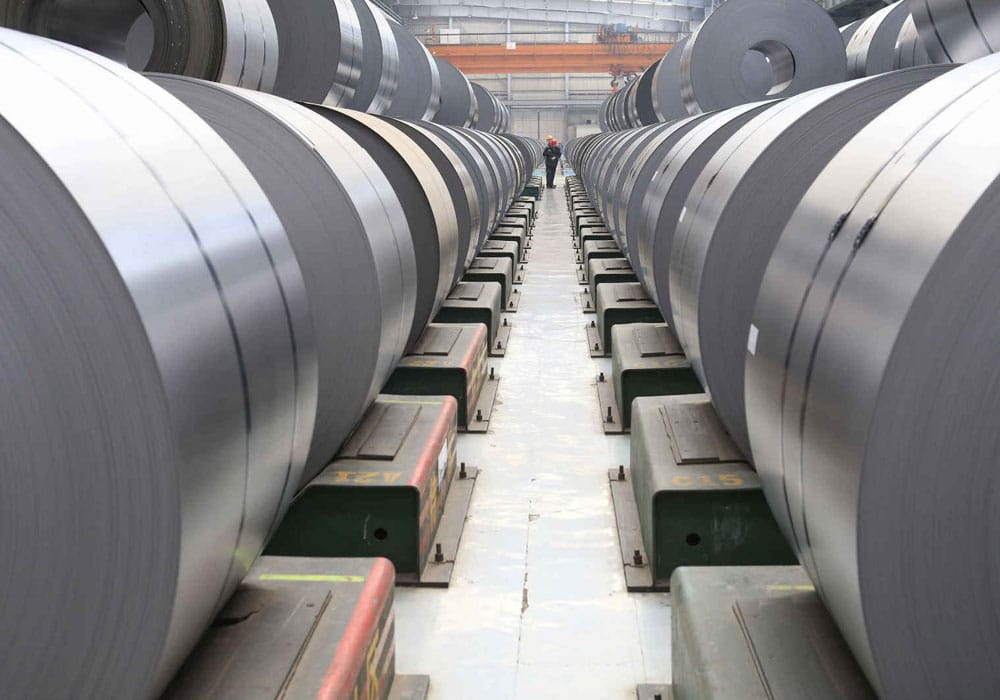Increasing the world’s need for aluminum
Fichsollshnes, as an international analyst firm, reports the rise in global demand for aluminum over the next few years, according to Metal News and quotes from Minting. This increase in demand is due to the growth of the construction industry and the increasing consumption of this metal in automotive. The automotive industry has made aluminum…

Fichsollshnes, as an international analyst firm, reports the rise in global demand for aluminum over the next few years, according to Metal News and quotes from Minting. This increase in demand is due to the growth of the construction industry and the increasing consumption of this metal in automotive. The automotive industry has made aluminum an ideal replacement for steel, leading to lower vehicle weight. Fitch also predicts that the global aluminum market will face a steady shortage in the mid-2019-2023 period (1398 to 1402 solar).
In addition to construction and automotive, the aerospace industry is one of the industries that grows demand for aluminum in key markets. In the industry, aluminum is also a good alternative to steel, and is more environmentally friendly than metal. Fitch also announced several significant deals between car manufacturers and the aerospace industry with aluminum manufacturers, saying that the deals have led to an increase in demand and supply weakness over the past few years. An example of these contracts was signed in 2017 (1396 solar) between the American company Arkonic and the Japanese company Toyota. Under the contract, the Arkwich, who works in the field of light metalworking and engineering, pledged to supply the Japanese automaker with aluminum for several years. China’s aluminum production will decline in the coming years. The cut is due to the pressure that the government has put into place for environmental legislation. As a result of this harshness, the production of this metal in China will be at a higher cost and will be less than the past. This is while China has always been the largest aluminum producer in the world. According to data published in the English Wikipedia encyclopedia, the country produced 31.873 million metric tons of primary aluminum in 2016 (January 2012 to mid December 1395). This year, however, total primary aluminum production was 58.8 million tons in that year. However, Fitch predicts that China’s aluminum product will continue to grow steadily over the next few years, from 34.3 million tons this year (2019) to 41.9 million metric tons in 2028 (1407 solar). These figures represent an average growth of 2.4% per year. Meanwhile, in the past 10 years, the average increase in Chinese aluminum production was 11.7% per year. However, China will remain the driving force behind the global aluminum production and will produce half of the aluminum product in the world in the next few years. Fitch added that the solidarity of aluminum consuming companies and producers of this metal will continue in the automotive markets of the United States, the European Union and China, and the growing trend of these markets will provide further opportunity for this metal; however, The condition that aluminum composers are expected to solidify with the consumer industries in the long run will continue, the rise in aluminum prices will signal the winds that oppose this flow. Aluminum prices are rising as car makers try to cut production costs and, as a result, Fitch analysts predict that aluminum consumption will grow from 62.9 million tons this year (2019) to 79.7 million tons in 2028. These figures represent an average growth of 2.8 percent per year. The inclination of companies operating in the automotive and aerospace industries has not only led to an increase in demand for aluminum. In general, these days the market is hotter than any mineral that reduces car and airplane weight. Lowering the weight of the aircraft and the car could lead to a significant reduction in fuel consumption. As a result of this approach, the aerospace industry even thinks of replacing aluminum with scandium-aluminum alloys. If this happens, the demand for the alloy can rise to about 80 tons per year, while the current consumption of oxidecandia in the world is about 15 to 20 tons per year, as well as the use of scandium alloys to replace with a small amount of The aluminum used in machinery boosts the automobile industry’s need for scandium and has the capacity to increase demand for this metal by 2025 (1,414 solar) to more than 1,800 tons per year.
